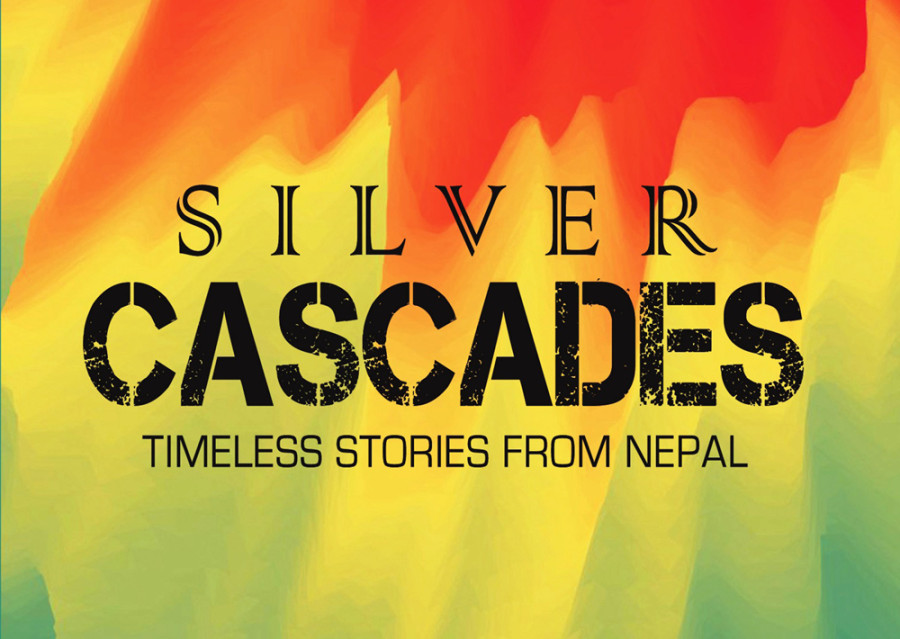Books
‘Silver Cascades’: Timeless Stories From Nepal
Mahesh Paudyal is well-aware that translating is not merely a mechanical work; it is a creative process and involves staying true to the original piece.
Bibek Adhikari
The major challenge in literary translation is that one is not always able to precisely translate both lexical-semantics as well as cultural-semantics. Then there are other minor problems: the syntactical and grammatical aspects of the language. Taking both sides into consideration, the translator has to be faithful to the original work as well as create a distinctive piece of literature that should evoke almost the same feeling in the target language.
Mahesh Paudyal, the translator of Silver Cascades, a collection of twenty Nepali short stories, knows the scenario quite well. He’s well-aware that translating is not merely a mechanical work; it is a creative process and involves staying true to the original piece—not to mention the burden of creating something moving in a new language. Keeping that in mind, he has translated twenty timeless stories, ranging from the modernist Guru Prasad Mainali, to the contemporary Maya Thakuri.
These stories show gradual growth in Nepali literature. Encapsulating different turns and movements, from realism to romance, they also depict how the subjects and themes vary historically. Nepali literature is said to have entered its modern phase with the publication of Mainali’s Nasho, a collection of eleven short stories. Afterwards, writers like BP Koirala, Bhawani Bhikshu, and Vijaya Malla wrote about the psycho-sociological aspects of common Nepali people. Along with Dev Kumari Thapa, Ramesh Bikal, and Parashu Pradhan, their writing is peppered with the Nepaliness, always seeking the roots. Only the stories of Madan Mani Dixit, Manu Brajaki, and Praijat delve into areas other than social realism.
Now comes the main question—how true is the translation to the original work and how stylistically up to the mark? Here, I’m going to comment upon the book with brutal frankness. Considering the fact that the collection is probably meant for an English-speaking audience, I am not very enthusiastic about the language. However, considering another fact, that these stories indeed represent the Nepali soil, anyone wishing to understand Nepali literature better should definitely pick up the book. While doing so, the English-speaking readers may come across many semantic gaps and awkward phrases that leave a bad taste in their mouths. Hiring a literary editor and/or a copy editor could have easily solved this problem.
But first, the strength. The selection reflects a century of Nepali writing. All of these stories indeed carry the essence of Nepal. They also depict the socio-economic as well as the socio-political milieu from 1900 to the present time. Many bring the rustic setting into life. Some portray the urban lifestyle. Yet, all of them describe the various facets of human lives—from relationships, to sexual urges, to class consciousness, to death. By both reflecting and defending the national soul and heart, they read like a mosaic of visions and Nepali imaginations. The selection is indeed meant to be read as the best Nepali short stories of the century.
For a century, Nepali writers have been writing about the poor. Stories such as Ramesh Bikal’s “The Magnificent Buffalo,” Shiva Kumar Rai’s “The Price of Fish,” and Parashu Pradhan’s “An Empty Apartment” show how in the hands of the rich the poor become mere puppets. On the other hand, Nepali writers have also been writing about human relations. BP Koirala’s “Toward Madhes,” Madhav Bhandari’s “Parental Home,” and Manu Brajaki’s “Annapurna’s Feast” portray the workings of a complex psychological human psyche, keeping the idea of gender as well as class conflict in their backdrop.
Be that as it may, now comes the use of language. Take, for instance, the first sentence of the first story, “A Blaze In The Straw”: “Gaunthali, Chame’s wife, was a woman of an acrid tongue.” Nothing wrong with it, but nothing exciting either. A slight change in the phrase with perhaps “a sharp-tongued woman” would have made it read better. But “acrid” is one word that’s been so overused throughout the collection, as in “such an acrid sentence” instead of “such bitter words.” Also, “cross with indignation” is one of the phrases that keep recurring. A simple adjective like “enraged” or “furious” would have been better than the clunky verbiage. And epithets like “accursed ones” and “scoundrels” make the book close to Russian fiction.
Whenever the characters express disgust or outrage, they curse with “Fie on you!” and call each other “scoundrels.” Both of these expressions are archaic and over-wrought. “Shame on you!” or even “Damn you!” would have been a modern and better equivalent of the Shakespearean “Fie on thee!” “Scoundrel,” on the other hand, is old-fashioned but readily understood. Also, using “ewer” for “pitcher” or “yonder” for “beyond” misses the point. Then, there are some sloppy phrases like “put up here” for “stay here” and “took dinner” instead of “had dinner” as well as “some years back” rather than “some years ago.” And the occasional typos and misplaced semicolons also make the read a halting one.
Some other awkward phrasings are: “slapped him with two powerful blows” instead of “slapped him twice powerfully” or “struck him with two powerful blows,” followed by the funny “with their mouths stretched up to their earlobes” instead of “smiling from ear to ear,” and the bewildering “there was no blot of hatred” for “there wasn’t a speck of hatred.” Insults like “Shut up, antique!” and “You luckless fool!” are artificial sounding, yet somehow quaintly polite.
Additionally, the stories, when translated and read in the modern context, come up with surprising revelations, leading to an obvious misreading. For example, Bhawani Bhikshu’s “My Little Friend” is a story of an individual who’s fond of children, and it delves into the internal dynamics of his mind. However, reading between the lines, the readers can assume there is more than fondness—maybe even a desire for pederasty—in the story, which is clearly a misreading. Also, Poshan Pandey’s “A Sweater for Brother-in-law” is confusing in the beginning, and Prema Shah’s “The Husband” infuses elements of real with surreal without reason or rhyme. One cannot, for sure, tell what’s going on inside the characters’ minds. The problem here is not of translation, but of the original works themselves.
So, where is Nepali literature at an international level? Martha Foley, one of the editors of The Best American Short Stories, once defined a successful short story as “a story which is not too long and gives the reader the feeling [that] he has undergone a memorable experience.” If length is the sole yardstick of measurement, these stories win big. But there’s a second aspect to consider—readers undergoing a memorable experience. That is quite a subjective idea and may vary from one reader to another. Some of these stories strike a sympathetic chord while others do not.
To put it in a nutshell, these stories introduce the best of Nepali writing, but the palpable joy of reading is punctuated by the lack of editorial review. If only the International Nepali Literature Society (INLS) had hired an efficient editor to catch the simple to egregious errors, the anthology would have been a much easier and enjoyable read.
Adhikari is a poet and critic based in Kathmandu. He tweets as @bibek_writes.
Book: Silver Cascades
Translator: Mahesh Paudyal
Genre: Fiction/Short Stories
Publisher: Book-Hill Publications
Price: Rs. 400




 22.65°C Kathmandu
22.65°C Kathmandu














